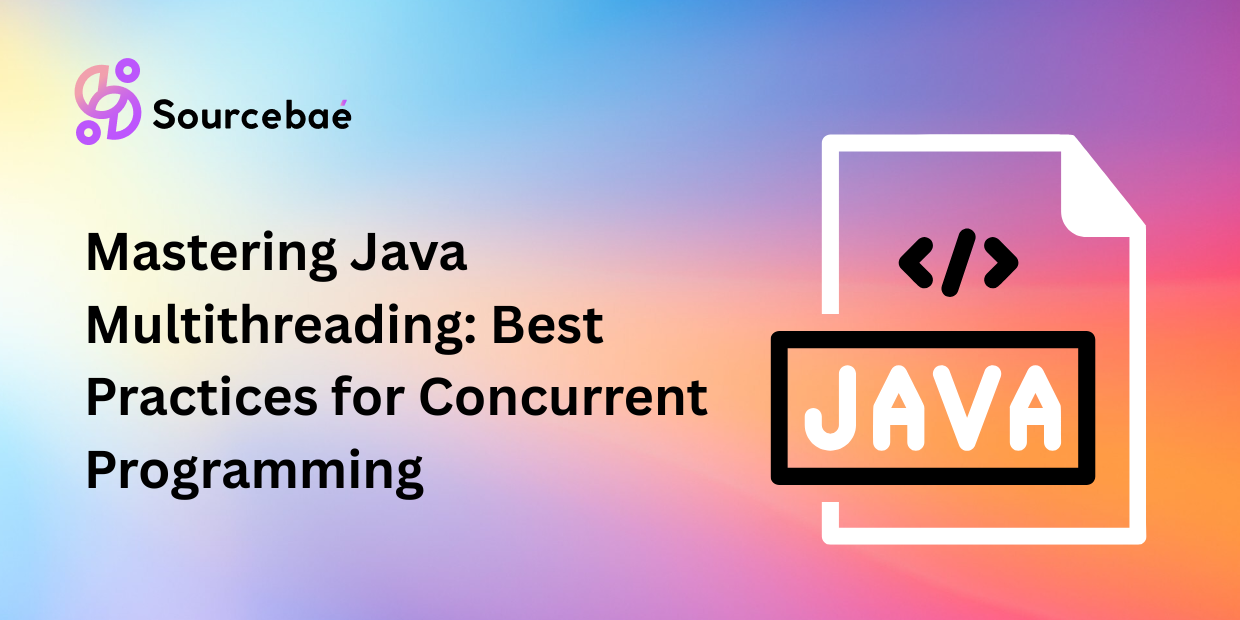In the world of software development, where performance and efficiency are paramount, mastering concurrent programming is a crucial skill. Java, with its robust multithreading capabilities, allows developers to create highly responsive and efficient applications. In this article, we will delve into the best practices for mastering Java multithreading, equipping you with the knowledge to write efficient, bug-free, and high-performing concurrent programs.
Java’s multithreading capabilities enable programs to perform multiple tasks simultaneously, leveraging the power of modern processors. To harness this power effectively, consider the following best practices:
1. Understanding Thread Lifecycle
Understanding the lifecycle of a thread is fundamental. Threads go through various states, including NEW, RUNNABLE, BLOCKED, WAITING, TIMED_WAITING, and TERMINATED. It’s essential to know when to create, start, pause, resume, and terminate threads to ensure smooth program execution.
2. Synchronization and Locking
Java provides synchronization mechanisms to ensure thread safety when multiple threads access shared resources. Using synchronized blocks or methods, along with the java.util.concurrent package, helps prevent race conditions and data inconsistencies.
3. Effective Use of Thread Pools
Creating a new thread for every task can be resource-intensive. Utilizing thread pools manages thread creation and reuse efficiently, minimizing the overhead of thread creation.
4. Avoiding Deadlocks
Deadlocks occur when two or more threads are unable to proceed because each is waiting for a resource held by another. To prevent deadlocks, use a proper locking order and consider using the tryLock() method.
5. Thread Intercommunication
Proper communication between threads is crucial for effective coordination. Methods like wait(), notify(), and notifyAll() enable threads to signal each other, preventing busy-waiting and unnecessary resource consumption.
6. Immutable Objects
Using immutable objects eliminates the need for synchronization, making your code more robust and efficient. Immutable objects can be safely shared among multiple threads without the risk of data corruption.
7. Volatility and Memory Consistency
The volatile keyword ensures that changes made by one thread to shared variables are visible to other threads immediately. Understanding memory consistency guarantees helps avoid unexpected behaviors.
8. Optimizing for Performance
While multithreading enhances performance, excessive context switching and contention can hinder it. Profile your application, identify bottlenecks, and use tools like the Java VisualVM to optimize performance.
9. Error Handling and Uncaught Exceptions
Uncaught exceptions in threads can lead to program instability. Implement proper error handling mechanisms, such as setting a default uncaught exception handler, to prevent unexpected crashes.
10. Testing and Debugging
Thoroughly test your multithreaded code using tools like JUnit and stress-testing frameworks. Debugging multithreaded applications can be challenging, so use debugging tools and loggers effectively.
FAQs (Frequently Asked Questions)
Q: How can I ensure my multithreaded Java program is free from data races?
A: Proper synchronization using synchronized blocks or methods, along with consistent use of volatile and the java.util.concurrent package, can help eliminate data race issues.
Q: What is the significance of the volatile keyword in multithreading?
A: The volatile keyword ensures that changes made to a variable are immediately visible to other threads, preventing thread-specific caching.
Q: Is it always necessary to explicitly start a thread using the start() method?
A: Yes, calling the start() method is crucial to initiate the thread’s execution. Directly calling the run() method won’t create a new thread.
Q: How can I decide the optimal size for a thread pool?
A: The optimal size depends on factors like available processors, task nature, and resource requirements. Using Java’s Executors class to create a thread pool with dynamic sizing can be a good approach.
Q: Can I synchronize on primitive data types in Java?
A: No, synchronization requires objects that support intrinsic locks. You can use wrapper classes like Integer or explicit lock objects for synchronization.
Q: Are thread-local variables useful in multithreading?
A: Yes, thread-local variables store data that’s specific to each thread. They help prevent data conflicts when multiple threads are accessing shared resources.
Conclusion
Mastering Java multithreading is an essential skill for any Java developer aiming to build high-performance applications. By understanding thread lifecycles, synchronization, intercommunication, and proper error handling, you can create concurrent programs that are both efficient and reliable. Remember to apply these best practices, leverage Java’s powerful tools, and continuously test and optimize your code for a seamless multithreading experience.
SOURCEBAE: Hire Java Developer






